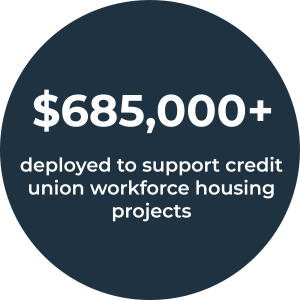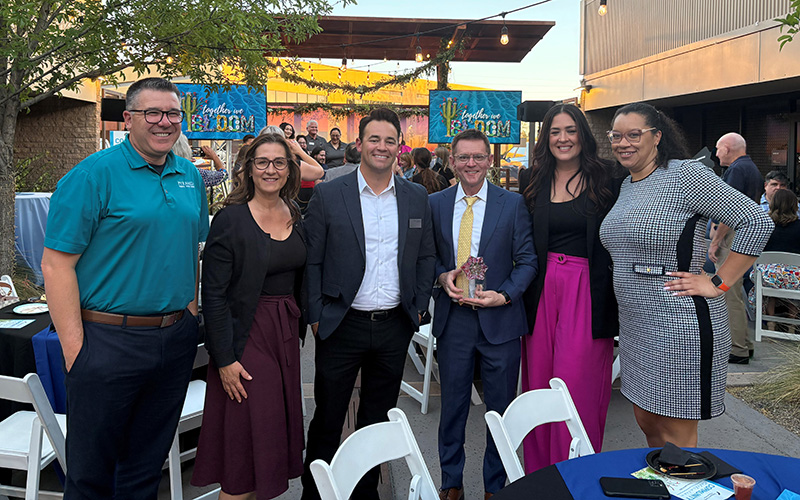 As housing costs continue to rise across the West, credit unions throughout the region are working with local businesses and community partners to design innovative solutions to this challenge. We support credit unions and their allies who are committed to alleviating the housing burdens facing their workforce – those who fall within 60 to 140 percent of the area medium income (AMI). We do this in a number of ways, including:
As housing costs continue to rise across the West, credit unions throughout the region are working with local businesses and community partners to design innovative solutions to this challenge. We support credit unions and their allies who are committed to alleviating the housing burdens facing their workforce – those who fall within 60 to 140 percent of the area medium income (AMI). We do this in a number of ways, including:
- Supporting credit unions with project development;
- Providing project implementation funds;
- Fostering community collaboration;
- Leveraging credit union partnerships;
- Identifying resources; and
- Promoting targeted approaches to solving the housing problem.
Examples of how credit unions are impacting the workforce housing market:
- Financing alternative housing types: Credit unions are creating opportunities for their members to access financing for accessory dwelling units such as backyard cottages, detached garage apartments, mother-in-law suites, tiny homes, and prefabricated homes in communities that do not have restrictive ordinances for alternative housing options.
- Financing local landlord 1-4 projects: Credit unions are providing conventional financing options for individuals or small businesses looking to construct duplexes, triplexes, or quadplexes instead of commercial lending to developers.
- Rural rehabilitation financing or loan fund: Credit unions are serving rural areas by creating a loan fund or financing to rehabilitate or renovate older housing units.
- Private market rental security deposit loans: Credit unions could provide low-interest loans over the course of a rental lease to decrease barriers of access to an inflated housing market with steep security deposit fees.
Workforce Housing Grants
GoWest Credit Union Association member credit unions that are interested in exploring the workforce housing needs of the communities in your membership are welcome to apply for a planning grant of up to $20,000 or an implementation grant of up to $100,000 to support your efforts.
- Workforce Housing Project Implementation Grant Guidelines
- Workforce Housing Planning Grant Guidelines
Interested in Supporting Workforce Housing?
If you are interested in learning more about the Workforce Housing Initiative or if you have a project in mind and would like to know if it qualifies for grant support, please submit your questions here.
Submit InterestFoundation Articles
Peninsula Credit Union Launches 100% Mortgage Program for Washington Families
Peninsula Credit Union has introduced a new home loan initiative designed to make homeownership more accessible to low- and moderate-income families […]
Turn Ideas into Impact: Learn How to Leverage GoWest Foundation Grants on June 4
GoWest Foundation is hosting a virtual session, Investing in Impact: Your Guide to GoWest Foundation Grants, on June 4 from 12-1 […]
Tucson Credit Unions Win BLOOM Award for Developing a Collaborative Housing Solution
On April 24, the Community Foundation of Southern Arizona honored Tucson Credit Unions with its 2025 Bold Aspirations BLOOM Award […]



